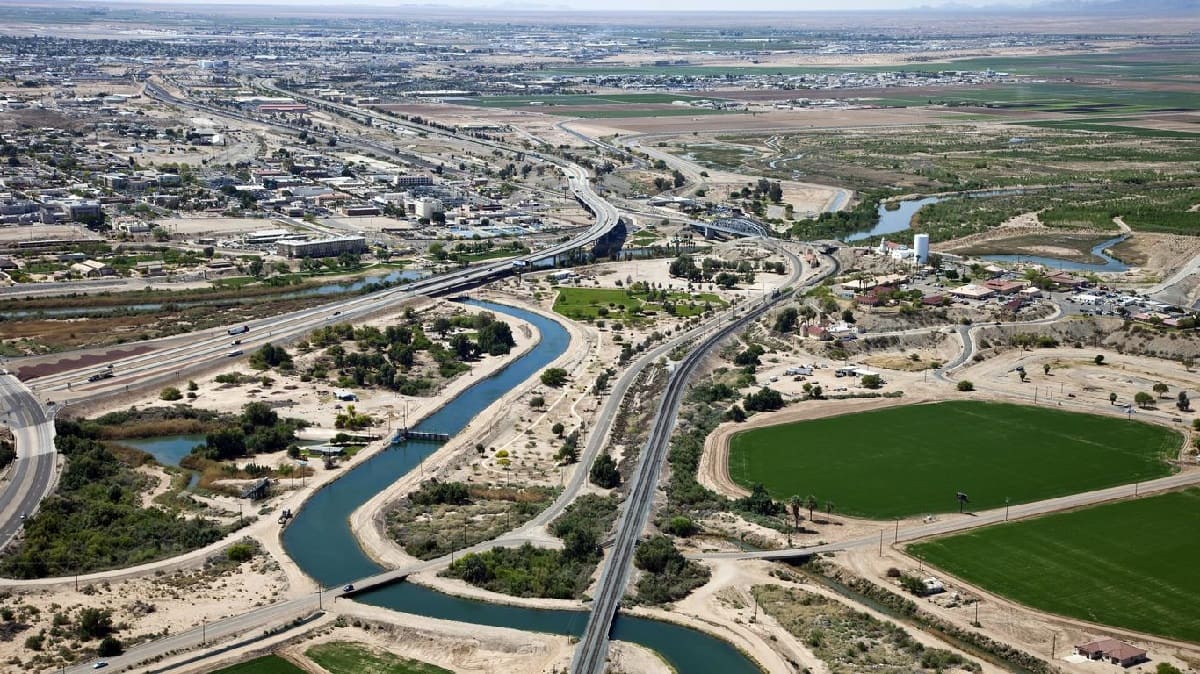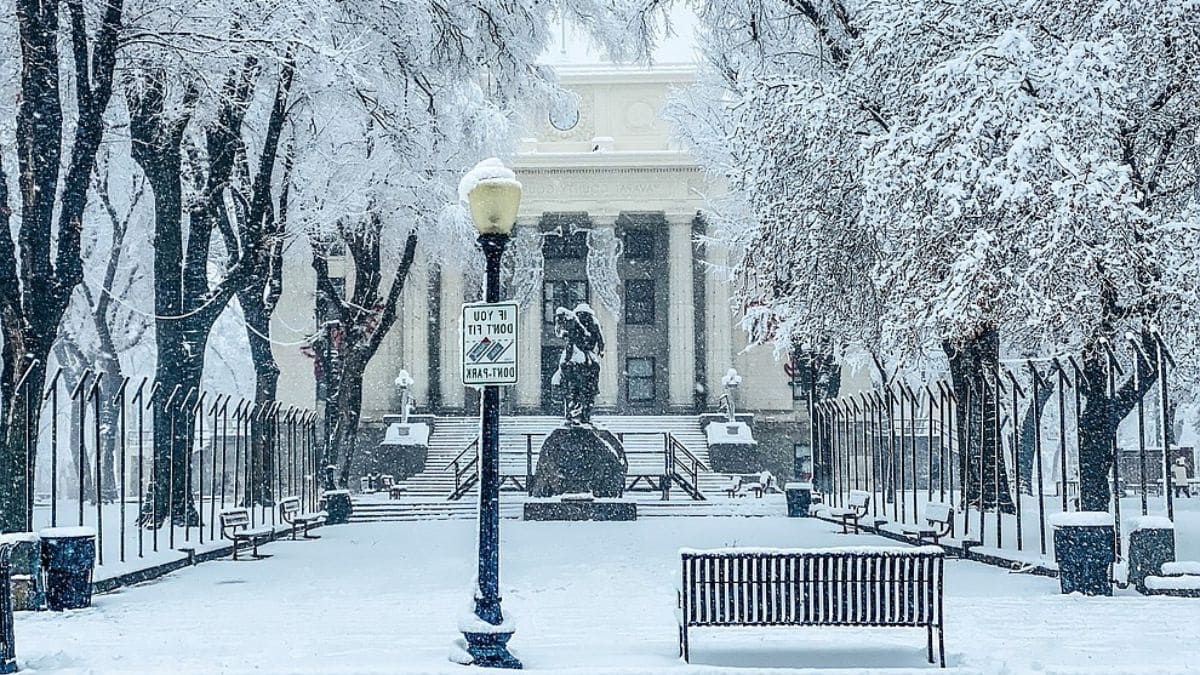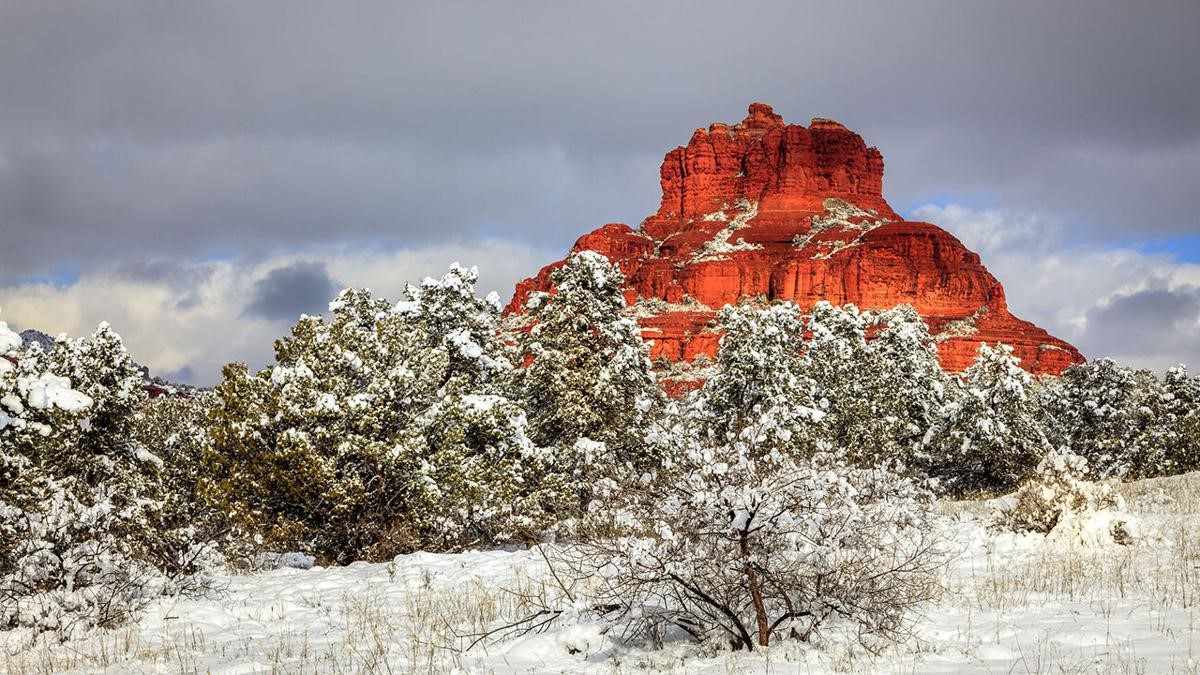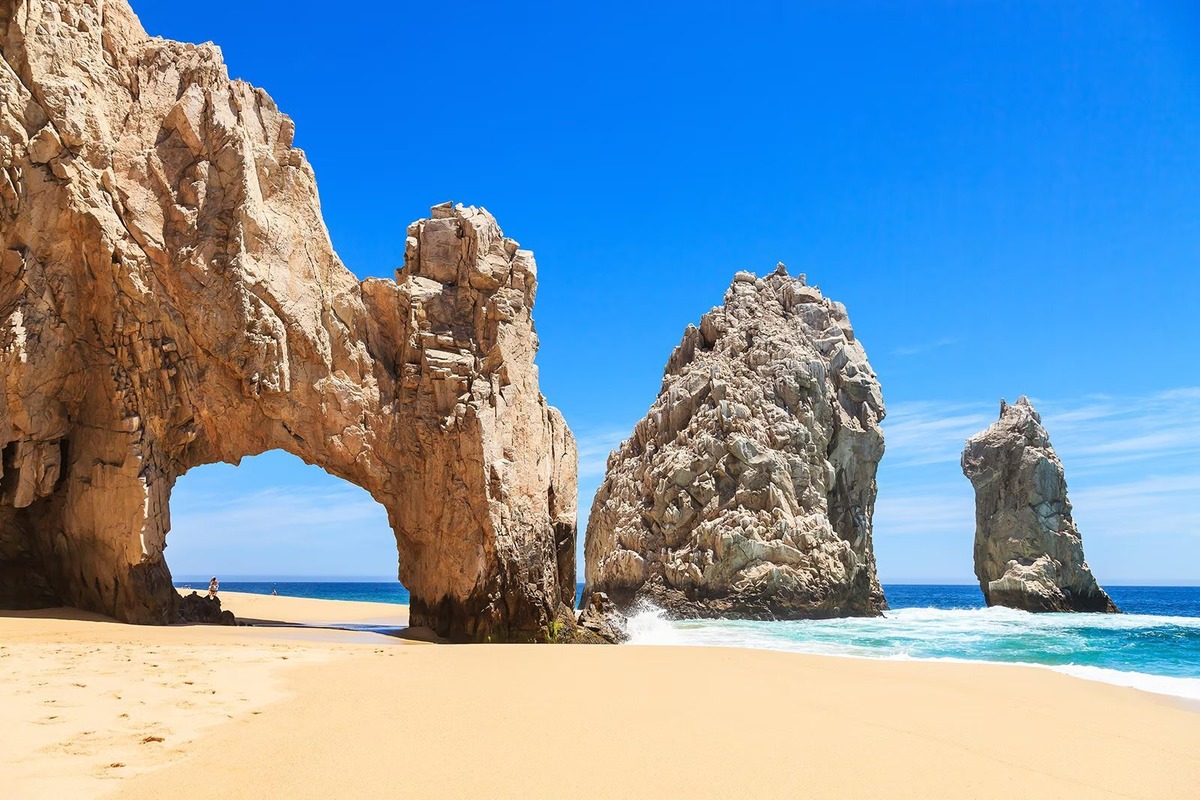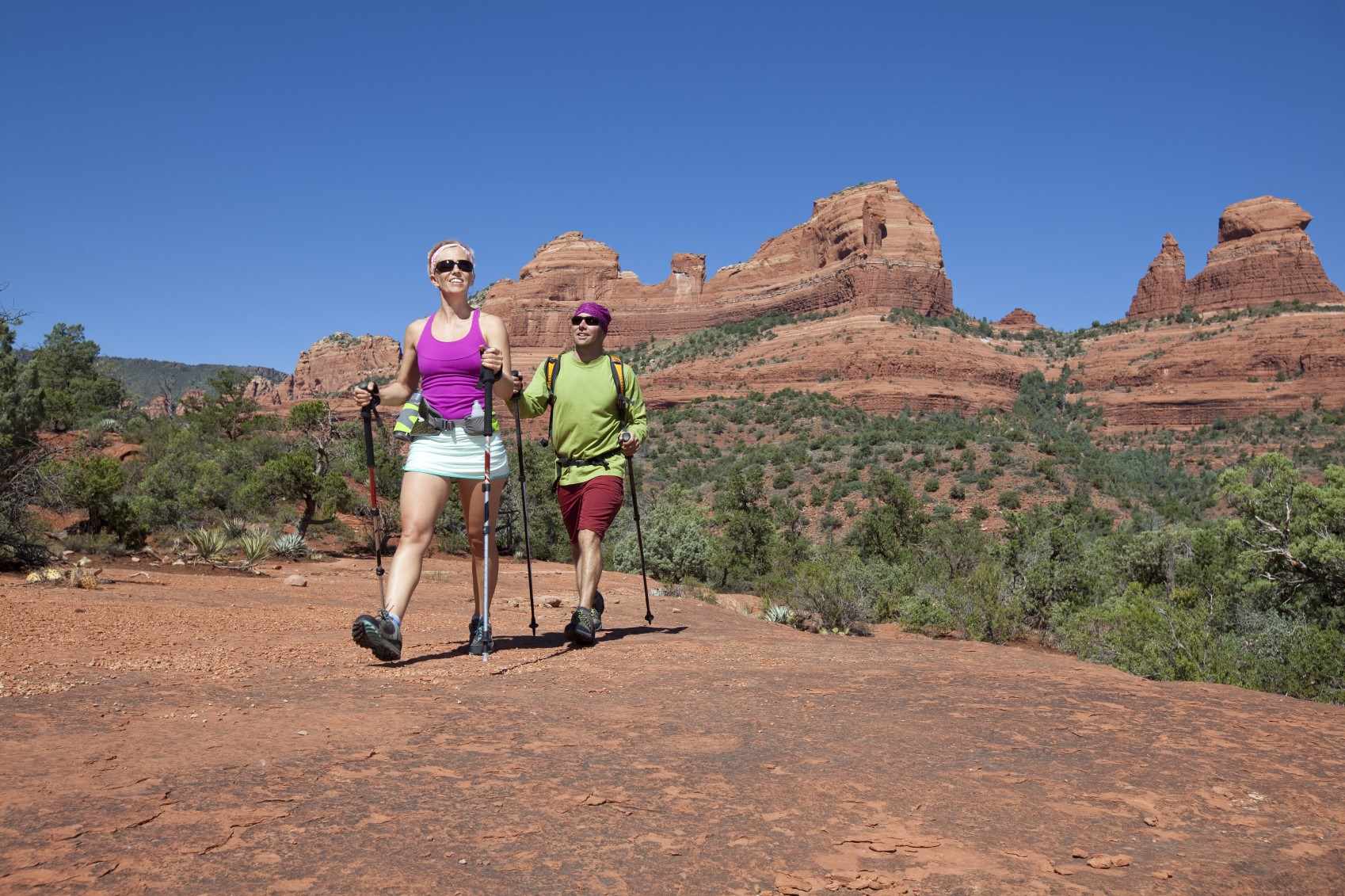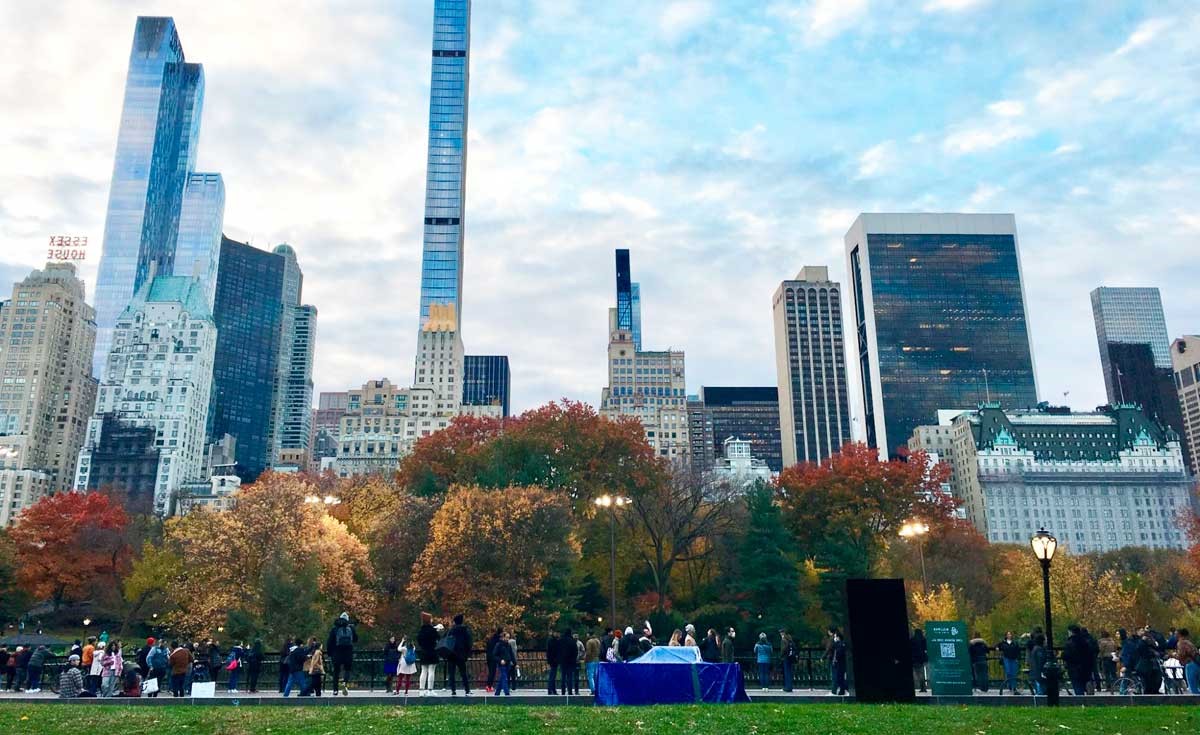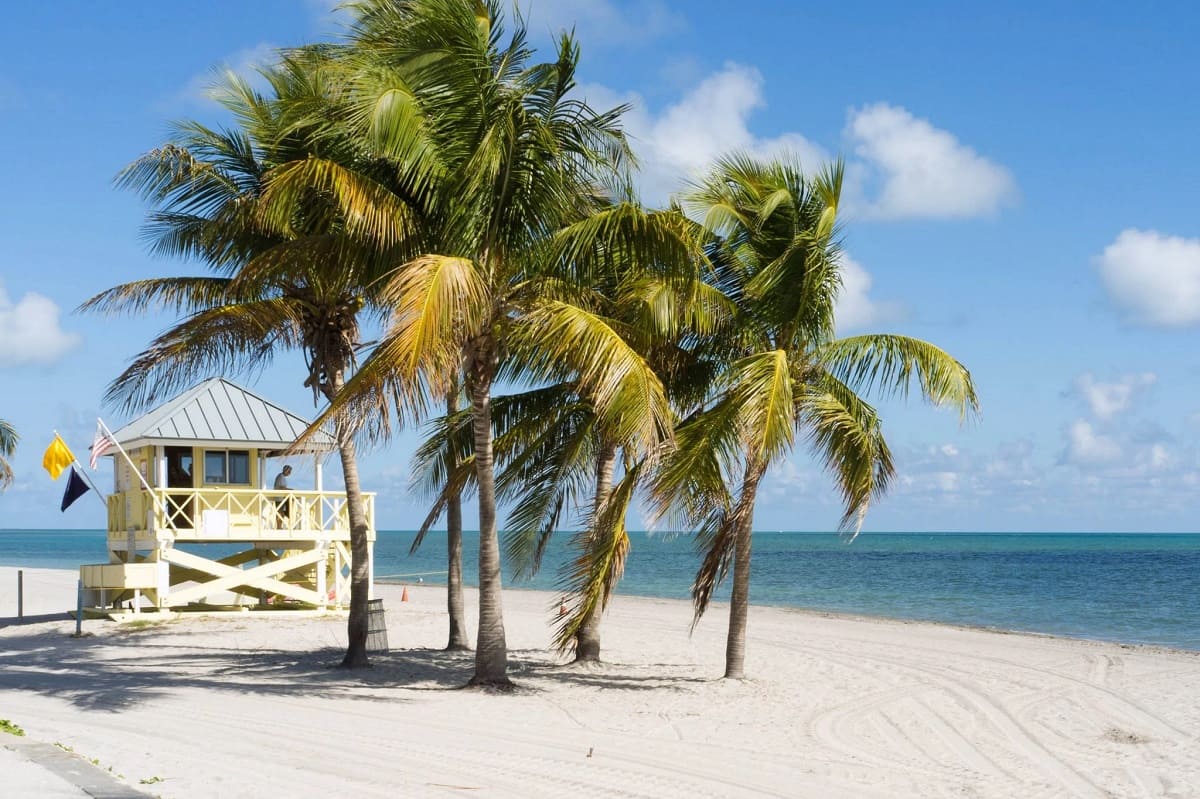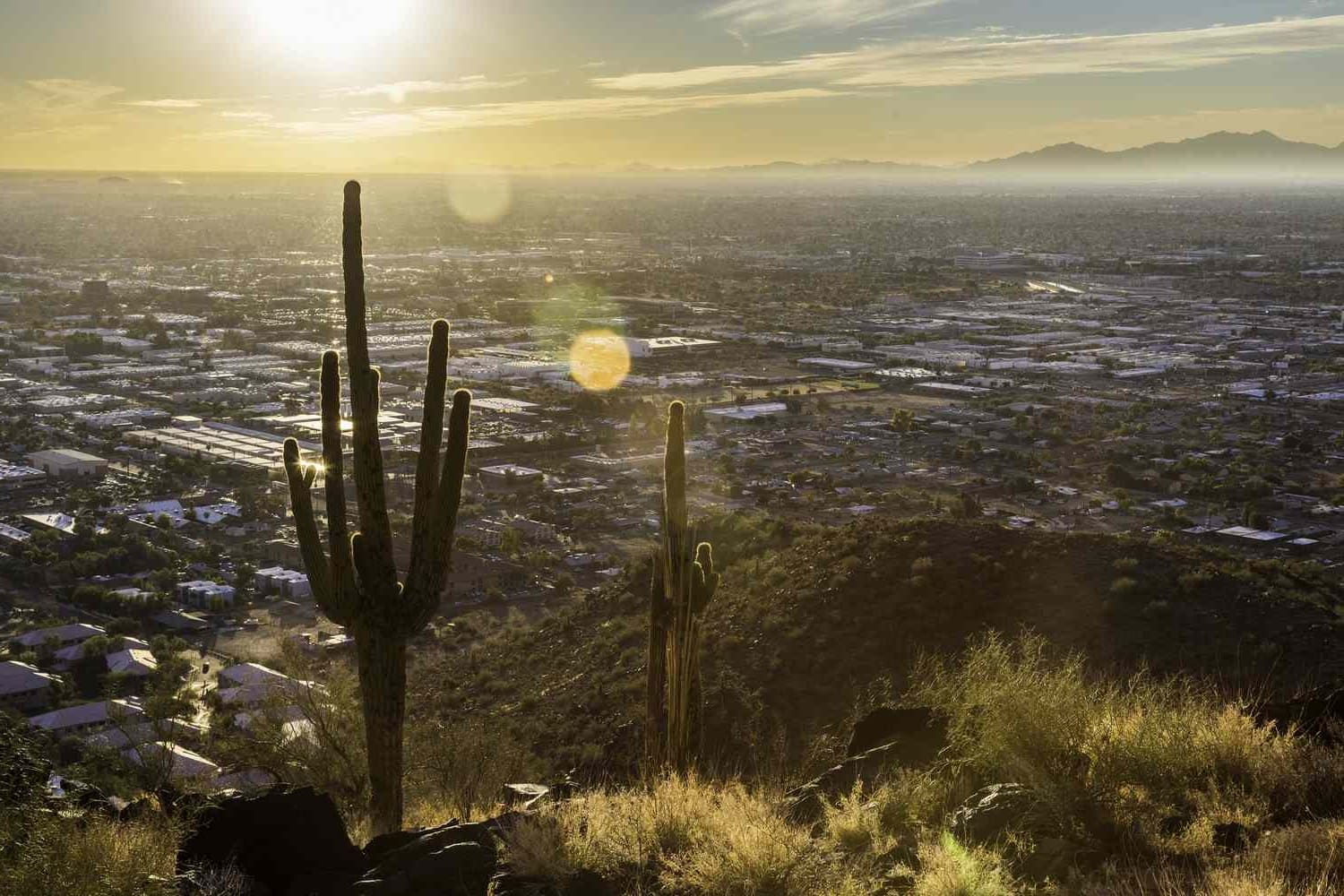Home>Weather and Climate>March Weather In Arizona: A Comprehensive Guide
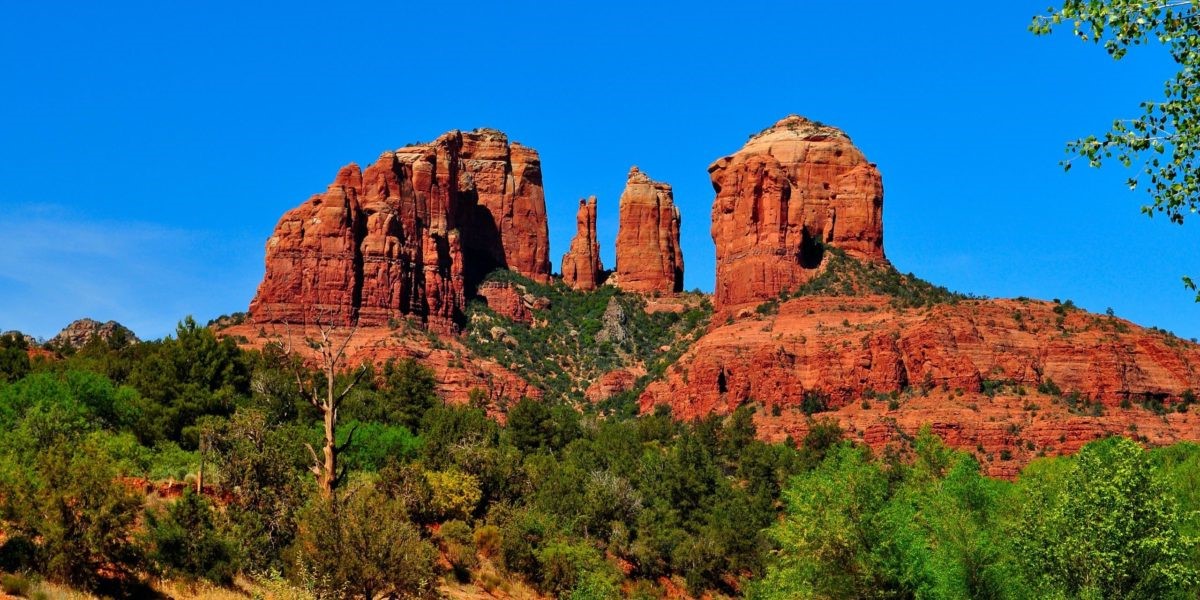

Weather and Climate
March Weather In Arizona: A Comprehensive Guide
Published: March 5, 2024
Discover the diverse weather and climate of Arizona in March with our comprehensive guide. Plan your trip with insights on temperatures, precipitation, and more.
(Many of the links in this article redirect to a specific reviewed product. Your purchase of these products through affiliate links helps to generate commission for Temperatures.com, at no extra cost. Learn more)
Table of Contents
Understanding Arizona's Climate
Arizona, known for its diverse landscapes and unique geological formations, experiences a climate that varies significantly across the state. The weather in Arizona is greatly influenced by its desert and semi-arid regions, resulting in hot summers and mild winters. Understanding the climate of Arizona is essential for residents and visitors alike, as it can greatly impact outdoor activities and travel plans.
The state of Arizona is characterized by its arid and semi-arid climate, with vast desert areas dominating the landscape. The southern part of the state, including cities like Phoenix and Tucson, experiences scorching summers with temperatures often exceeding 100°F (37.8°C). In contrast, the northern regions, such as Flagstaff and the Grand Canyon, have a more moderate climate, with cooler summers and significant snowfall in the winter months.
The unique topography of Arizona contributes to its varied climate. The state is home to the Sonoran Desert, known for its iconic saguaro cacti and extreme heat, as well as the Colorado Plateau, which encompasses the breathtaking red rock formations of Sedona and the majestic Grand Canyon. These diverse landscapes give rise to microclimates, where temperature and precipitation can differ significantly within short distances.
Furthermore, Arizona's climate is influenced by its elevation. The higher elevations in the northern part of the state experience cooler temperatures, while the lower elevations in the southern regions are characterized by hotter and drier conditions. This elevation-based variation in climate adds to the state's overall climatic diversity.
Understanding Arizona's climate involves recognizing the impact of the North American Monsoon, which brings a shift in weather patterns during the summer months. This seasonal wind pattern results in increased moisture and thunderstorm activity, particularly in the southern and central parts of the state. The monsoon season, typically occurring from June to September, brings much-needed rainfall to the arid landscape, replenishing desert flora and providing relief from the intense summer heat.
In summary, Arizona's climate is a product of its desert terrain, elevation diversity, and the influence of the North American Monsoon. The state's weather patterns exhibit significant variation across different regions, making it essential for residents and visitors to be mindful of these climatic nuances when planning outdoor activities and travel in Arizona.
Average Temperatures in March
In March, Arizona experiences a transition from the cooler winter months to the onset of warmer spring weather. The average temperatures across the state during this time of year reflect this shift, offering a pleasant climate for outdoor activities and exploration.
In the southern regions of Arizona, including Phoenix and Tucson, March marks the beginning of a gradual increase in temperatures. Average high temperatures in these areas range from 70°F to 80°F (21°C to 27°C), providing a comfortable environment for outdoor excursions and recreational pursuits. The evenings and early mornings tend to be cooler, with average lows ranging from 50°F to 60°F (10°C to 16°C). This temperature range creates an ideal setting for enjoying outdoor dining, hiking, and sightseeing without the intense heat characteristic of the summer months.
In the northern part of the state, areas such as Flagstaff and Sedona experience cooler average temperatures in March due to their higher elevations. Daytime highs typically range from 50°F to 60°F (10°C to 16°C), offering a refreshing escape from the winter chill without the sweltering heat of summer. However, it's important to note that nighttime temperatures can drop significantly, with average lows ranging from 20°F to 30°F (-6°C to -1°C). Visitors to these regions should be prepared for cooler evenings and the potential for frost, especially at higher elevations.
The Grand Canyon, a prominent natural wonder in northern Arizona, experiences diverse temperature ranges in March. The South Rim of the Grand Canyon sees average highs of 50°F to 60°F (10°C to 16°C) and lows of 20°F to 30°F (-6°C to -1°C), while the North Rim tends to be cooler, with average highs ranging from 40°F to 50°F (4°C to 10°C) and lows from 10°F to 20°F (-12°C to -6°C). These temperature variations make March an intriguing time to visit the Grand Canyon, as visitors can witness the transition from winter to spring while taking in the breathtaking vistas.
Overall, March brings moderate and comfortable temperatures to Arizona, making it an excellent month for outdoor adventures and sightseeing. Whether exploring the desert landscapes of the south or the mountainous terrain of the north, visitors can enjoy a diverse range of outdoor activities amidst the pleasant climate that characterizes Arizona in March.
Precipitation and Rainfall Patterns
In Arizona, the precipitation and rainfall patterns in March play a crucial role in shaping the state's natural landscapes and ecosystems. As a predominantly arid region, Arizona experiences limited rainfall throughout the year, with distinct variations in precipitation levels across different geographic areas.
During March, the southern and central parts of Arizona, including Phoenix and Tucson, typically receive minimal rainfall, with average precipitation ranging from 0.5 inches to 1 inch (1.3 cm to 2.5 cm) for the month. This limited rainfall contributes to the arid conditions characteristic of the Sonoran Desert and surrounding areas. However, the sporadic showers that occur during this time can bring a refreshing change to the desert environment, often leading to the emergence of vibrant wildflowers and rejuvenated plant life.
In contrast, the northern regions of Arizona, such as Flagstaff and the Grand Canyon, experience slightly higher precipitation levels in March. The higher elevations and diverse topography of these areas result in average rainfall ranging from 1 inch to 2 inches (2.5 cm to 5 cm) during the month. This increased precipitation contributes to the nourishment of forests, meadows, and alpine ecosystems, supporting the rich biodiversity found in these mountainous landscapes.
The variability in precipitation patterns across Arizona during March is further influenced by the transition from winter to spring. As the state undergoes a gradual shift in weather, the potential for sporadic rain showers and even snowfall in the higher elevations adds an element of unpredictability to the overall rainfall patterns. This variability contributes to the dynamic nature of Arizona's climate, shaping the state's natural environment and offering diverse experiences for residents and visitors alike.
Moreover, the impact of precipitation on Arizona's iconic landscapes, such as the Grand Canyon and Sedona's red rock formations, is profound. The intermittent rainfall in March can accentuate the vibrant colors of the canyon walls and contribute to the formation of ephemeral streams and waterfalls, adding an extra dimension to the awe-inspiring beauty of these natural wonders.
In summary, the precipitation and rainfall patterns in Arizona during March reflect the state's climatic diversity, influencing everything from desert flora to mountain ecosystems. The interplay of limited rainfall in the desert regions and increased precipitation in the mountains creates a captivating tapestry of natural environments, offering unique opportunities for exploration and appreciation of Arizona's remarkable landscapes.
Wind and Dust Storms
Arizona's climate is characterized by its susceptibility to wind and dust storms, particularly during the transitional periods between seasons. In March, the state experiences the effects of these meteorological phenomena, which can impact various aspects of daily life and outdoor activities.
The occurrence of wind and dust storms in Arizona is primarily attributed to its arid and semi-arid landscapes, where dry, loose soil and sand are prevalent. These conditions create the potential for dust storms, also known as "haboobs," to develop, especially during periods of strong winds. The southern and central regions of the state, including Phoenix and Tucson, are particularly prone to these atmospheric disturbances.
During March, the transition from winter to spring can bring about fluctuating weather patterns, leading to increased wind activity. The gusty winds, often associated with weather systems moving across the region, can stir up fine particles of dust and sand from the desert floor, giving rise to dust storms. These storms are characterized by towering walls of dust that sweep across the landscape, significantly reducing visibility and impacting travel on roads and highways.
The impact of wind and dust storms extends beyond visibility issues, as the airborne particles can pose health risks and affect air quality. Individuals with respiratory conditions are particularly vulnerable during these events, highlighting the importance of staying indoors and minimizing exposure to the dusty air. Additionally, the accumulation of dust on outdoor surfaces and vehicles necessitates proactive measures to mitigate the effects of these storms.
In response to the potential hazards posed by wind and dust storms, local authorities and meteorological agencies in Arizona provide timely warnings and safety guidelines to the public. These efforts aim to raise awareness about the risks associated with dust storms and emphasize the importance of preparedness and caution when navigating through these weather events.
For residents and visitors in Arizona, understanding the dynamics of wind and dust storms is essential for ensuring safety and minimizing disruptions to outdoor plans. Being mindful of weather forecasts and heeding official advisories can help individuals make informed decisions and take appropriate measures to safeguard their well-being during periods of heightened wind activity and dust storm potential.
In summary, the prevalence of wind and dust storms in Arizona underscores the dynamic nature of the state's climate and the need for vigilance when encountering these atmospheric phenomena. By staying informed and exercising caution, individuals can navigate through these weather events while appreciating the unique aspects of Arizona's climatic diversity.
Spring Wildflowers and Plant Life
As the winter season transitions to spring, Arizona's landscapes undergo a remarkable transformation, giving rise to a vibrant display of wildflowers and rejuvenated plant life. The arrival of spring brings a burst of color and vitality to the desert terrain, offering a captivating spectacle for residents and visitors to behold.
One of the most anticipated natural phenomena in Arizona during spring is the blooming of wildflowers across the state's diverse ecosystems. The Sonoran Desert, renowned for its iconic saguaro cacti and arid beauty, becomes adorned with a stunning array of wildflowers, including the vivid orange blooms of Mexican poppies, the delicate pink flowers of desert lupines, and the vibrant yellow blossoms of brittlebush. These floral displays create a striking contrast against the desert backdrop, transforming the arid landscape into a kaleidoscope of colors.
In addition to the Sonoran Desert, the higher elevations of northern Arizona, such as Flagstaff and the Grand Canyon, also experience the emergence of wildflowers during spring. Meadows and forested areas come alive with an assortment of blooms, from the iconic purple hues of lupines to the cheerful yellow flowers of goldeneye daisies. The diverse plant life in these regions contributes to the rich tapestry of colors that define Arizona's springtime scenery.
The abundance of wildflowers in Arizona during spring is not only a visual delight but also plays a crucial role in supporting the state's ecosystems. These blooms serve as vital sources of nectar and pollen for native pollinators, including bees, butterflies, and hummingbirds, contributing to the intricate web of biodiversity in the region. Furthermore, the resurgence of plant life following the winter months brings renewed vitality to the desert flora, signaling the onset of a season of growth and renewal.
For nature enthusiasts and photographers, the springtime bloom offers unparalleled opportunities to witness and capture the beauty of Arizona's wildflowers. Hiking trails, botanical gardens, and scenic overlooks provide ideal vantage points to admire the floral abundance and immerse oneself in the splendor of the natural surroundings. The ephemeral nature of the wildflower bloom adds an element of fleeting beauty, encouraging individuals to cherish the seasonal spectacle while it lasts.
In essence, the spring wildflowers and rejuvenated plant life in Arizona epitomize the resilience and adaptability of the state's natural environment. The annual bloom serves as a testament to the enduring beauty of Arizona's landscapes and offers a captivating glimpse into the intricate interconnectedness of its ecosystems. Whether marveling at the desert wildflowers or exploring the mountain meadows, experiencing Arizona's springtime floral showcase is a testament to the state's enduring natural beauty.
Outdoor Activities and Events
In March, Arizona offers a myriad of outdoor activities and events that capitalize on the state's diverse landscapes and favorable weather conditions. From exploring iconic national parks to participating in cultural festivals, there are abundant opportunities for residents and visitors to immerse themselves in the unique experiences that Arizona has to offer.
For outdoor enthusiasts, the Grand Canyon stands as a premier destination for hiking, sightseeing, and adventure. The expansive vistas and awe-inspiring geological formations provide an unparalleled backdrop for exploration. Hiking trails such as the South Kaibab Trail and the Bright Angel Trail offer diverse perspectives of the canyon's magnificence, allowing hikers to witness the interplay of light and shadow across the rugged terrain. Additionally, guided tours and ranger-led programs provide educational insights into the geological history and ecological significance of this natural wonder.
In the southern regions of Arizona, including Phoenix and Tucson, outdoor events and cultural festivals abound during March. The state's rich heritage and vibrant arts scene are celebrated through events such as the Arizona Renaissance Festival, where visitors can step back in time and experience medieval-themed entertainment, artisan crafts, and immersive theatrical performances. Furthermore, the renowned Tucson Festival of Books attracts literature enthusiasts from across the country, featuring author presentations, book signings, and engaging activities for readers of all ages.
For those seeking a more leisurely outdoor experience, Arizona's botanical gardens and desert preserves offer tranquil settings for nature walks and botanical appreciation. The Desert Botanical Garden in Phoenix showcases a diverse collection of desert plants, including rare cacti and succulents, against the backdrop of the Sonoran Desert landscape. Similarly, the Tucson Botanical Gardens provides a serene oasis for visitors to admire a variety of plant species and themed garden exhibits, highlighting the beauty and resilience of desert flora.
Additionally, March in Arizona presents ideal conditions for outdoor dining and al fresco experiences. The state's culinary scene embraces the concept of outdoor dining, with numerous restaurants offering patio seating and scenic views. Whether savoring Southwestern cuisine amidst the desert sunset or enjoying a leisurely brunch in a garden setting, outdoor dining in Arizona provides a delightful fusion of culinary delights and natural beauty.
In summary, March in Arizona sets the stage for a diverse array of outdoor activities and events, inviting individuals to engage with the state's natural wonders, cultural heritage, and culinary offerings. Whether embarking on a hiking adventure at the Grand Canyon, immersing in the festivities of cultural events, or savoring the tranquility of botanical gardens, Arizona's outdoor experiences in March are as varied as they are captivating.
Packing and Dressing Tips for March
As March unfolds in Arizona, the transition from winter to spring brings about a shift in weather patterns, necessitating thoughtful consideration when packing and planning attire for outdoor activities and exploration. Whether venturing into the desert landscapes of the south or the mountainous terrain of the north, being prepared for the diverse climatic conditions is essential for a comfortable and enjoyable experience.
Southern and Central Arizona
In the southern and central regions of Arizona, including Phoenix and Tucson, March signifies the onset of warmer temperatures during the day, accompanied by cooler evenings. When packing for outdoor excursions in these areas, it is advisable to include lightweight and breathable clothing, such as moisture-wicking shirts, shorts, and comfortable hiking pants. Additionally, sun protection is crucial, so packing wide-brimmed hats, sunglasses, and sunscreen is highly recommended to shield against the intense desert sun.
As the evenings can still be cool, especially in the early part of March, having a light jacket or sweater on hand is prudent for added warmth during outdoor dining or evening strolls. Footwear should prioritize comfort and support, particularly for activities such as hiking and exploring desert trails. Closed-toe shoes or hiking boots are ideal for traversing uneven terrain and providing protection from desert flora.
Northern Arizona
In the northern regions of Arizona, such as Flagstaff and the Grand Canyon, March brings cooler daytime temperatures and the potential for chilly evenings. When preparing for outdoor adventures in these areas, packing layers is essential to accommodate the fluctuating temperatures. Lightweight long-sleeved shirts, fleece jackets, and waterproof outer layers are recommended to adapt to the variable weather conditions.
For outdoor activities such as hiking or sightseeing, sturdy hiking boots with good traction are essential for navigating trails and uneven terrain. Additionally, packing thermal undergarments and woolen socks can provide added warmth, especially for early morning or late afternoon excursions. It is important to be mindful of the potential for snow at higher elevations, so having a compact pair of snow boots or traction devices may be beneficial for certain trails.
General Tips
Regardless of the specific region within Arizona, it is advisable to carry a refillable water bottle to stay hydrated, as the arid climate can lead to increased fluid loss during outdoor activities. Packing a small backpack or daypack to carry essentials such as snacks, a first-aid kit, and a trail map is also recommended for convenience and preparedness.
By considering these packing and dressing tips for March, individuals can ensure that they are well-equipped to embrace the diverse outdoor experiences that Arizona has to offer. Whether basking in the desert sun or exploring the mountainous landscapes, being prepared for the climatic nuances of the state enhances the enjoyment and comfort of outdoor adventures.
Safety Precautions for Outdoor Adventures
When embarking on outdoor adventures in Arizona, prioritizing safety is paramount to ensure a memorable and secure experience amidst the state's diverse landscapes. Whether exploring desert trails, hiking in mountainous terrain, or participating in outdoor activities, being mindful of safety precautions is essential for mitigating potential risks and maximizing enjoyment.
-
Hydration and Sun Protection: Arizona's arid climate demands vigilant hydration practices. Carrying an ample water supply and regularly hydrating during outdoor excursions is crucial to prevent dehydration. Additionally, applying sunscreen, wearing protective clothing, and using sun hats and sunglasses help shield against the intense desert sun, reducing the risk of sunburn and heat-related illnesses.
-
Trail Preparedness: Before setting out on hiking or trail adventures, familiarizing oneself with the chosen route and its difficulty level is vital. Carrying a detailed map, compass, or GPS device aids navigation and prevents getting lost. Informing others about the planned itinerary and expected return time enhances safety by enabling timely assistance in case of unforeseen circumstances.
-
Weather Awareness: Arizona's weather can be unpredictable, especially during transitional seasons. Monitoring weather forecasts and being prepared for sudden changes in conditions, such as wind gusts or dust storms, is essential. Packing appropriate clothing layers and rain gear ensures readiness for varying weather scenarios.
-
Wildlife Caution: Arizona's diverse ecosystems are home to a variety of wildlife, including snakes, insects, and larger mammals. Practicing caution and maintaining a safe distance from wildlife is crucial for personal safety and respecting the natural habitat. Familiarizing oneself with potential wildlife encounters and knowing proper response protocols is advisable.
-
First-Aid Readiness: Carrying a well-stocked first-aid kit and being knowledgeable about basic first-aid procedures is imperative for addressing minor injuries or medical emergencies during outdoor activities. Additionally, having a means of communication, such as a charged cell phone or satellite device, facilitates seeking assistance if needed.
-
Responsible Recreation: Engaging in outdoor activities with respect for the environment and fellow adventurers contributes to a safe and harmonious outdoor experience. Adhering to trail etiquette, minimizing impact on natural surroundings, and following designated guidelines for recreational activities promote safety and environmental stewardship.
By embracing these safety precautions, individuals can embark on outdoor adventures in Arizona with confidence, knowing that they are well-prepared to navigate the diverse landscapes and enjoy the natural wonders while prioritizing personal safety and well-being.

